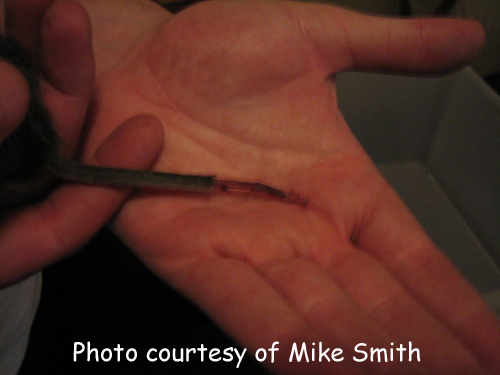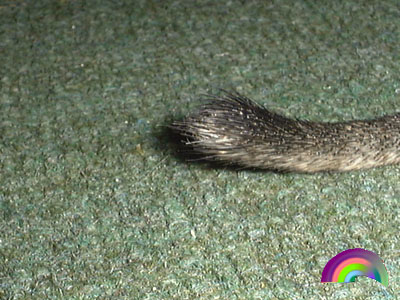Degus need handling in a special way. Why?

For most pet rodents, it is generally believed that picking them up by the base of the tail is the correct method of handling. However, degus are different.
If a degu is restrained by its tail, the skin near the base of the tail will 30
, 52,
or the skin proximal to the injury site*,
leaving a behind52.
This is an anti-predatory mechanism. Later, the degu will chew off the exposed bone at a narrowing of the vertebrae so to minimise blood loss30.
This will happen within 1-2 weeks of the skin shedding*.
The tail will not grow back30.
You MUST NOT pick up a degu by its tail!


It has been suggested that degus will only shed their tail when they feel threatened enough to do so, but there is no research to back this up. In our
experience, it can often happen unexpectedly as a result of minor incidents*-
this will vary from degu to degu. Degutopia's advice is to avoid restraining a degu by it's tail as much as possible- there are plenty of other methods
to pick up your furry friend!
When holding your degu, they will sit still for longer if you don't encircle them with your entire hand. Let your degu sit on your open palm or arm and
give them a treat- they'll be much happier to be held!
>What to do if your degu has shed or 'degloved' their tail<
1. The tail will bleed for several minutes, but the bleeding should not be profuse and should stop within 20 minutes. To aid clotting you can add corn
starch to the exposed tendons. If the bleeding has not stopped after 20 minutes the tail may require stitches and you should get it looked at by your
vet right away.
2. After several hours the exposed tendons begin to dry out and shrivel. After a day or so the degu will chew off the end part, leaving behind the
tail stump.
3. Monitor the stump for several weeks to check for signs of infection, which could include inflammation/swelling and/or a weeping or pussy
discharge. You can bathe the tail stump in saline solution to prevent this, but any of these signs require veterinary attention.
Remember that tail shedding is a natural process and has evolved to minimally inconvenience the degu, so usually little or no intervention is required,
although it can be shocking to see and the degu will have to learn to balance without their tail.
For more information about how to train your degu to make it easier for you to pick him/her up, please visit the training section.
For more handy tips on keeping your degu healthy, visit the health section.